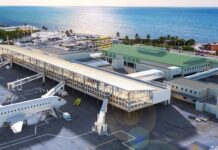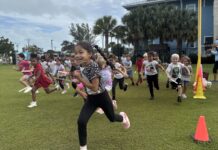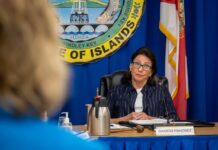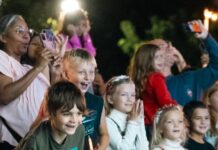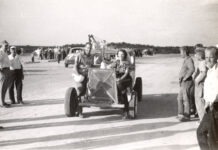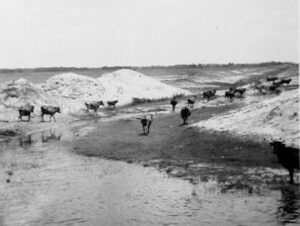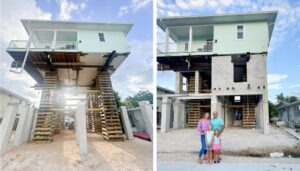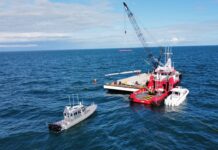By Jacqueline Hale
Ten-year-old Joseph Dituri could not hold his breath long enough to unscrew the zinc tab from the bottom of his father’s boat. After a few seconds, he had to resurface, catch his breath and dive back into the murky New York canal water, only to undo one more twist. After 10 minutes and little progress, Dituri’s father handed his son an underwater breathing apparatus.
“Before I dipped my head underwater, his final lesson to me, my only scuba diving lesson, was, ‘Oh, don’t hold your breath,’” Dituri said, recalling his father’s words.
As he worked beneath the surface, a small fish swam up and poked his mask, apparently reacting to seeing its own reflection. Dituri was hooked.
Forty-five years later, Dituri will attempt a world record of 100 days spent in an underwater fixed habitat, a record currently held by Bruce Cantrell and Jessica Fain at 73 days, in a mission called Project Neptune 100. The mission, from March 1 to June 9, will take place in Jules’ Undersea Lodge in Key Largo, a hotel located 30 feet underwater and accessible only by scuba diving. Marine Resource Development Foundation (MRDF)/MarineLab will manage the mission.
Spending 100 days in an underwater habitat will be another major accomplishment to add to Dituri’s biography, which includes retired U.S. Navy commander and Navy saturation diver, doctorate in biomedical engineering, author of several books, chief researcher for the Undersea Oxygen Clinic and chairman of the Florida Chapter of The Explorers Club. But to Dituri and MarineLab, there is a lot more to this mission than beating a world record.
“That’s a small, teeny, tiny portion of this whole thing. Even if I only stayed 60 days but I turned a whole bunch of kids on to exploring the marine environment, that would be a win,” Dituri said.
The 100-day mission has two major focuses: education and research.
“This whole new group of kids that’s out there, if we can incentivize them to be excited about exploration, the undersea environment, research, science, some kind of STEM – science, technology, engineering, mathematics – if we can get them excited about that, we can stimulate the next version of great explorers,” Dituri said.
MarineLab has a long history of engaging young people with marine conservation. In 1984, a group of female students from Broward County stayed for multiple nights in the MarineLab Undersea Classroom in John Pennekamp Coral Reef State Park, the first group of non-military, non-doctorate scientists to live underwater. Now located in its own compound in Key Largo, including the protected lagoon where Jules is located, MarineLab provides opportunities for hands-on experience with marine life and conservation to some 5,000 kids every year.

“What we’ve found is that if you take someone who doesn’t have any experience with the ocean, and you introduce them to it in a controlled environment with some great, knowledgeable instructors, they make a connection,” Thane Milhoan, mission director and habitat operations manager at Jules’ Undersea Lodge, said. “And when they make that connection, then they typically tend to change their trajectory in life.”
Milhoan hopes to send 30 to 50 students, with chaperones, to join Dituri for an overnight session. They will leave as aquanauts, armed with research experience on one of the mission’s science projects and short videos they created documenting their time underwater.
The underwater habitat will also serve as a “digital studio in the sea,” with social media influencers joining a lineup of top scientists to broadcast talks and demonstrations from underwater and spread the message of marine conservation to a wider audience.
Planned scientists include Mikki McComb-Kobza, executive director of Ocean First Institute; Hunter Hines, who holds a doctorate in microbial ecology; Harrison Albert, founder of Animal Interactions Program Advisors; Tim Gallaudet, a retired rear admiral in the U.S. Navy, oceanographer and former acting NOAA administrator; Dr. Douglas Ebersole, an interventional cardiologist; and Alex Brylske, author of “Beneath the Blue Planet.” More speakers will be confirmed leading up to the mission.
Dituri, who works as an associate professor at the University of South Florida, will teach his classes on diving and hyperbaric medicine from Jules’ Undersea Lodge.
The goal is to reach more than 100 million individuals over the 100-day period.
Jules’ Undersea Lodge will also serve as a research hub over the 100 days, with Dituri as a test subject.
Following his retirement from the U.S. Navy, Dituri earned his doctorate in biomedical engineering. With the realization that, every day, an average of 22 of his fellow servicemen died by suicide, Dituri studied hyperbaric oxygen therapy, the medical use of oxygenated air at an elevated pressure to increase blood flow and oxygen levels throughout the body and accelerate healing, with the goal of treating traumatic brain injury (TBI) in veterans.
After his own TBI in a car accident in 2021, Dituri has focused on a three-pronged approach to treating TBI: physiological, physical and psychological. This approach emphasizes not only hyperbaric oxygen therapy, but also simultaneously healing bodily pain associated with the TBI event and cognitive behavioral therapy.
While in Jules’ Undersea Lodge, Dituri will conduct a series of tests as part of his research on TBI. Before, during and after the 100 days, he will take stem cell collections, an electroencephalogram to measure electrical activity in the brain, methylation and cytokine blood panels that provide insight into nutritional support needs and inflammatory response, and psychological and psychosocial exams, all to understand what happens to the body during 100 days under pressure.
With guests from organizations like the Defense POW/MIA Accounting, Dituri plans to bring awareness to the impact of PTSD and TBI on veterans, and his research on healing these injuries.
“I’m all about healing under pressure, and it’s not just healing the wounds, it’s healing the soul. It’s talking with people about the problems,” Dituri said. “It’s talking about bringing the loved ones back that we lost, and healing those people that are still here, that are left behind. We want to repatriate that person, that service member, and heal those people. So, it’s healing in a lot of different ways, but healing with pressure, that’s what we are all about.”
Other studies include vision tests to detect any changes after living in a confined space and experiments from other researchers to be tested at depth, including a study created by Dituri’s colleague Michael Cross with implications for growing meat in a lab. The applications for many of these experiments tie to exploration in a different extreme environment: space.
“You’re going to put people in a tin can and let them stay for 200 days while they transit from here to get to Mars. Six months. … You have to figure out how to live in a tin can. Why don’t we try living in this tin can underwater first?” Dituri said.
As with space travel, the logistics and safety requirements of this mission to an extreme environment are pressing. The logistics are proving the most complicated, as Milhoan must arrange the delivery of cameras, phones, microphones, computer equipment, food and laundry to the habitat with a constant turnover of visitors.
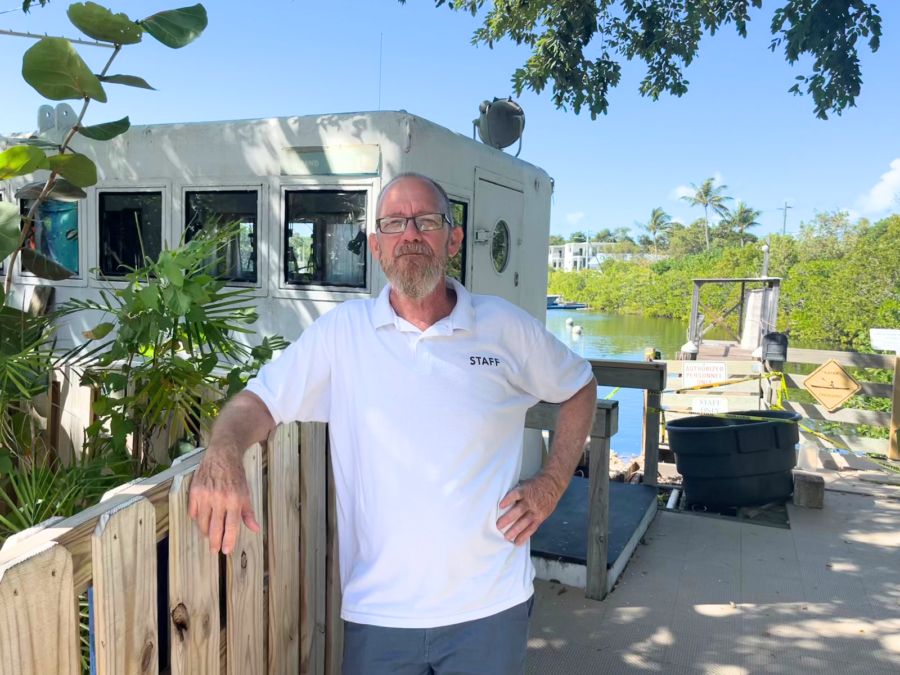
The habitat, which was originally developed by Ian Koblick as La Chalupa research laboratory until he refurbished it into Jules’ Undersea Lodge, has functioned in the lagoon for over three decades. According to Koblick and Milhoan, the design leaves little concern in terms of safety. It is a positive pressure environment, meaning the pressure inside is greater than the surrounding pressure. Like an upside-down cup placed in a tub of water, the habitat can only flood as fast as air escapes, so flooding the habitat is nearly impossible. From previous experience, Milhoan knows that Dituri could last several days without additional oxygen and, because the habitat sits at 30 feet, decompression is not needed during ascent. Milhoan will monitor the habitat from an on-surface command van with webcams, intercoms, a pressure regulator, a high-water alarm and more.
Dituri, too, is confident and ready to take on the challenge.
“There’s no apprehension. I’m not pensive at all,” Dituri said. “I’m ready to get this thing done. I’m ready to increase awareness of the marine environment. I’m ready to rejuvenate that hope that we have in exploration and science, technology, engineering and math.”


